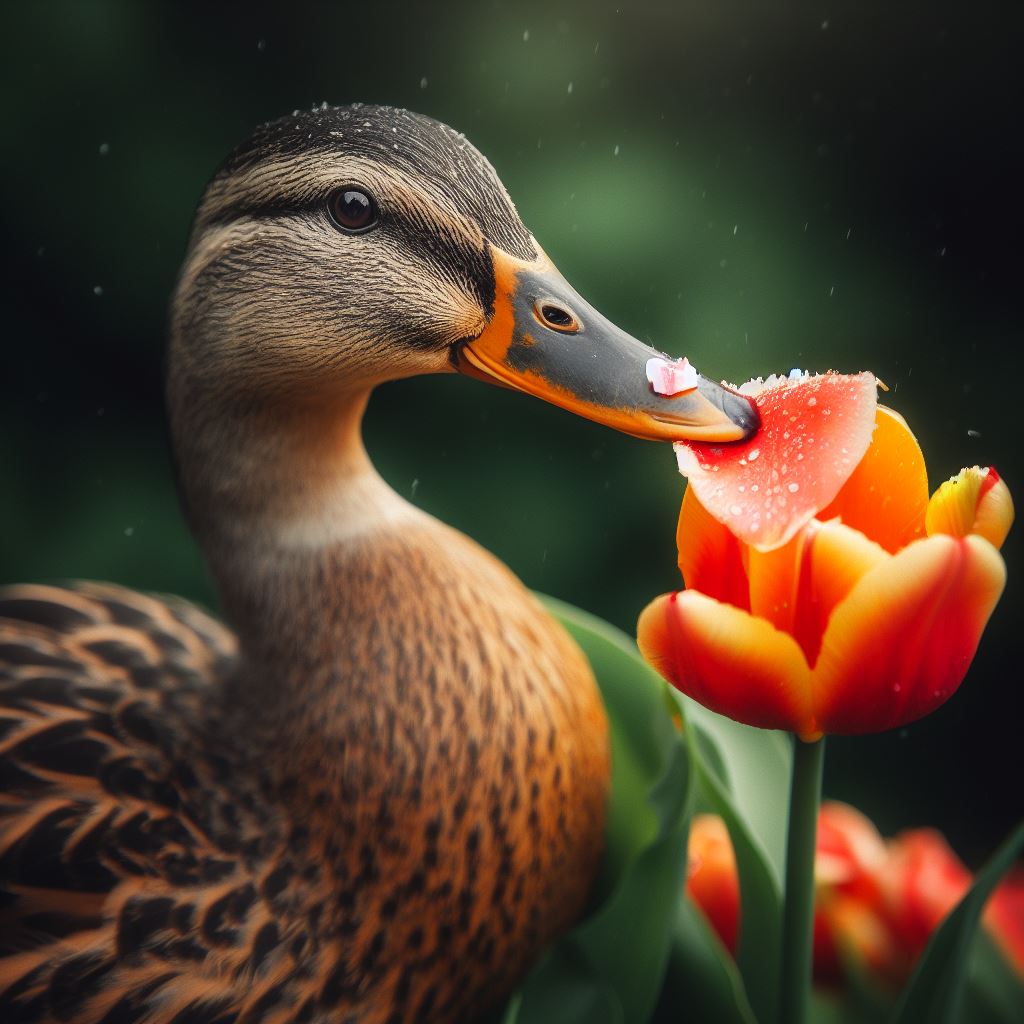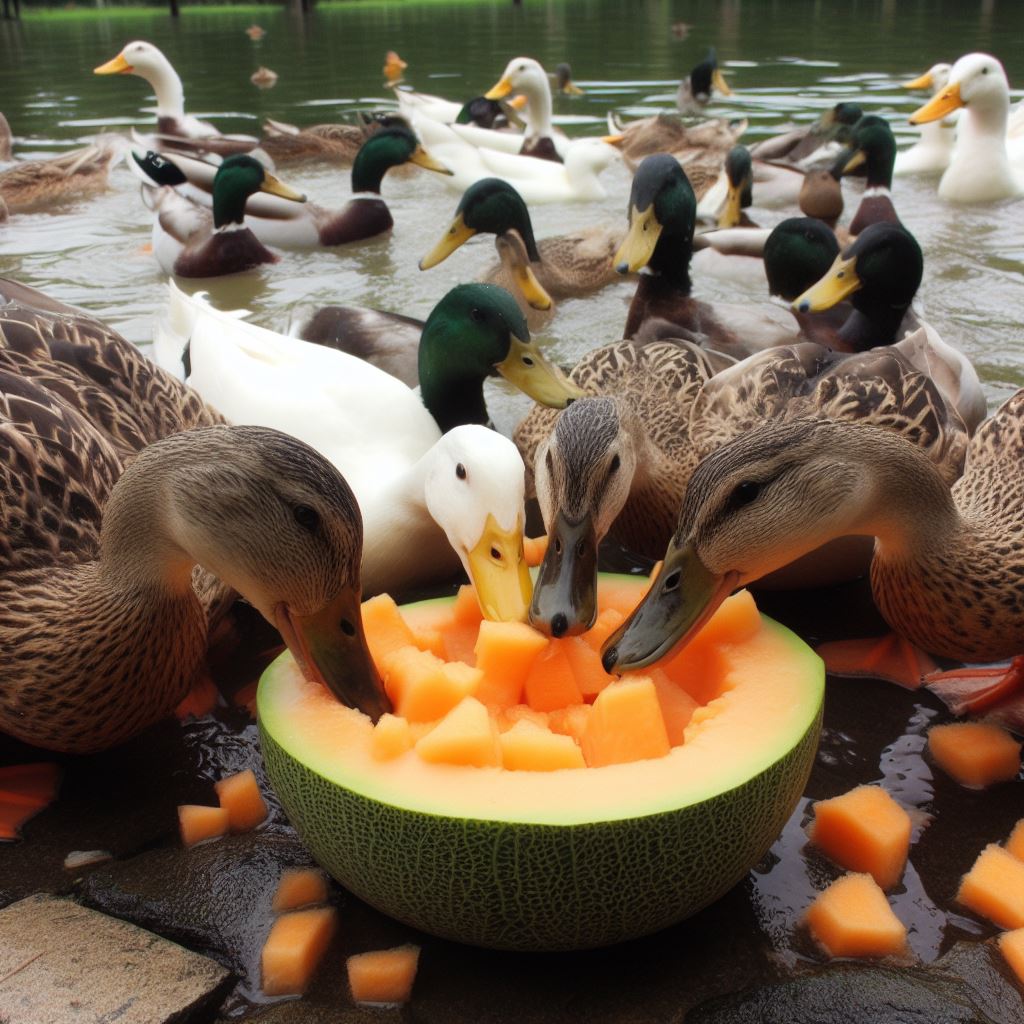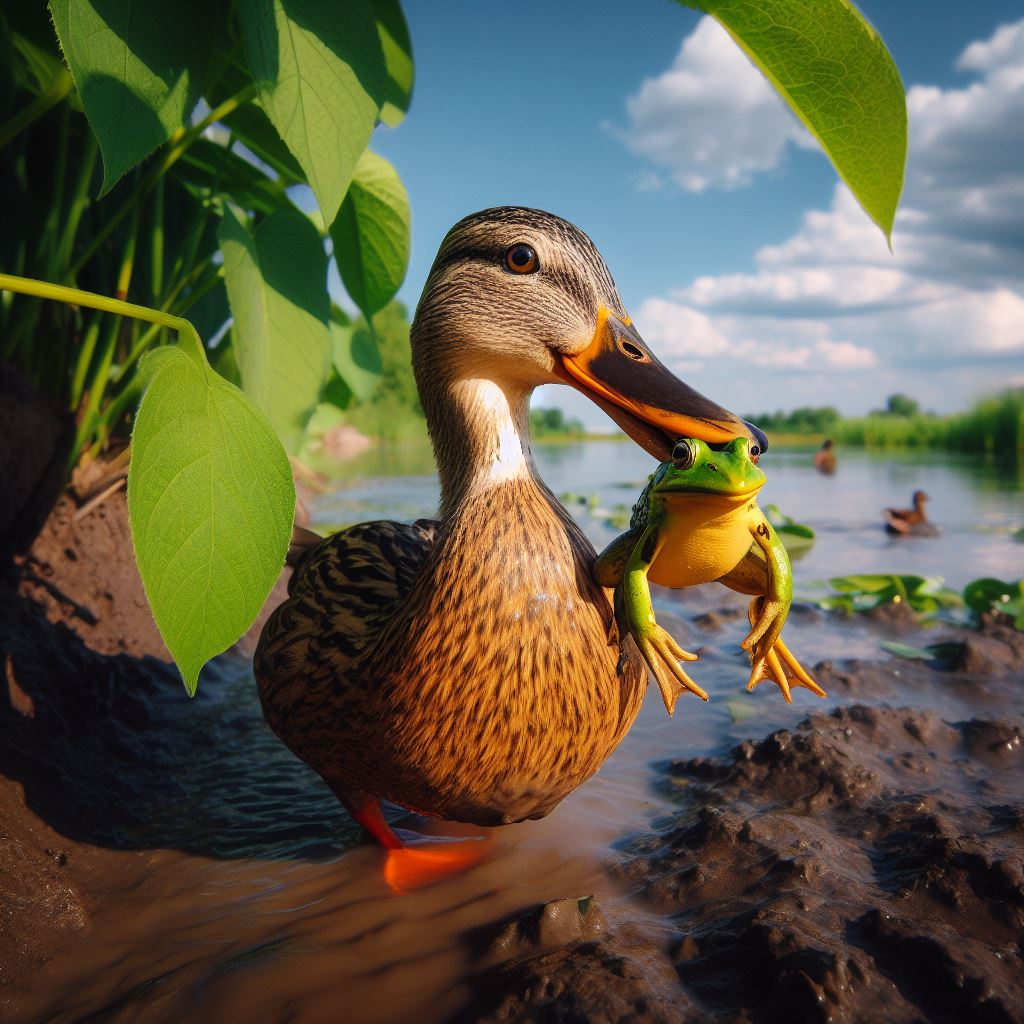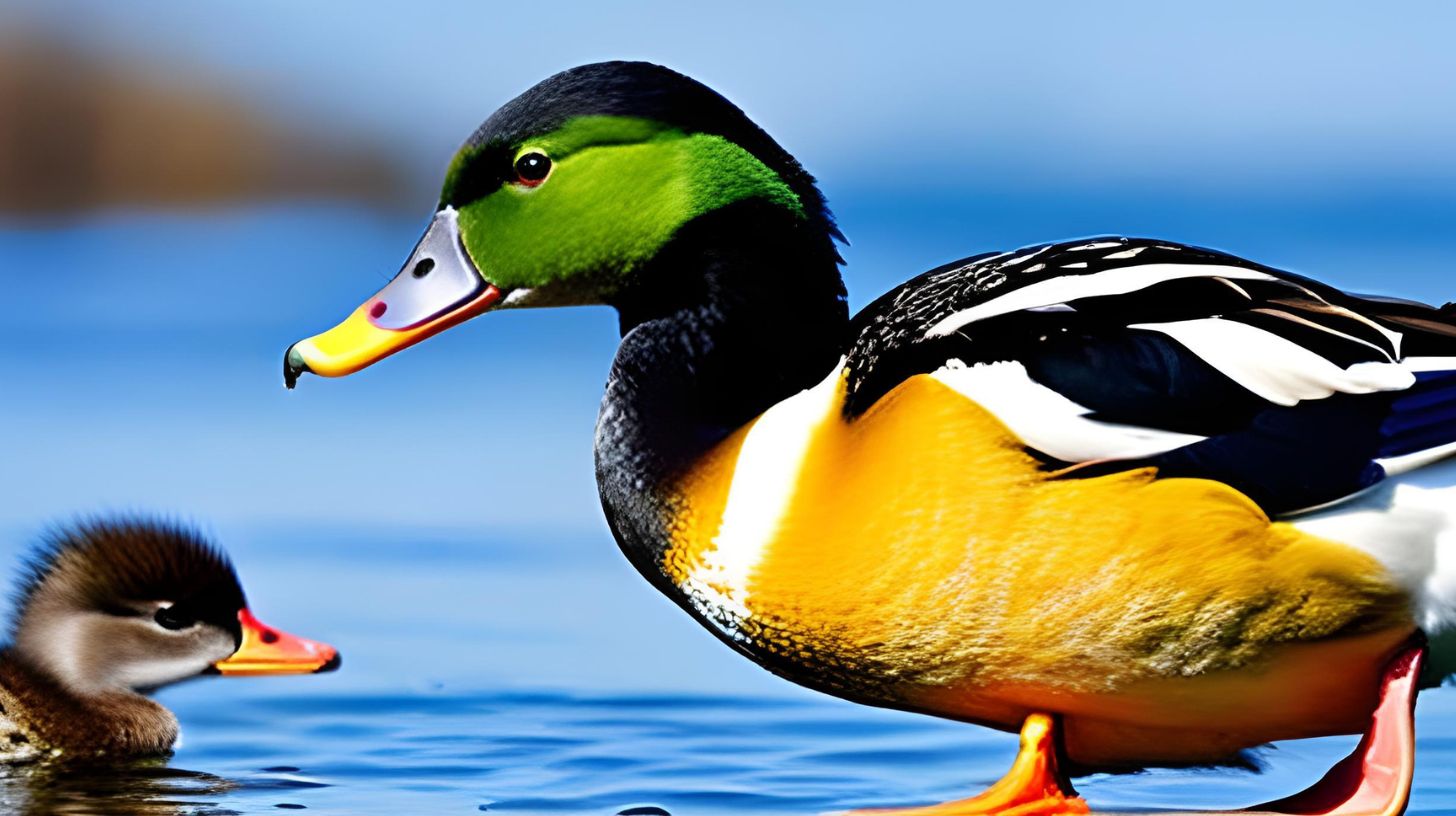Can Ducks Eat Tulips? Facts

Table of content:
Yes, ducks can eat tulips in moderation. The flower petals are not highly toxic and provide small amounts of nutrients. However, limit intake to 1-2 petals per duck due to higher toxicity in bulbs, stems, and leaves.
Tulips are a popular spring flower, known for their wide variety of bright, cheery colors. If you have both ducks and tulips in your yard, you may wonder if ducks can eat tulips safely.
This article will explore whether or not ducks can eat tulips, the potential risks and benefits, and tips for duck owners on providing occasional tulip treats while maintaining a balanced diet.
Before delving into whether ducks can eat tulips, it’s helpful to understand some background on both ducks and tulips.
Facts About Ducks
- Ducks are waterfowl that are members of the Anatidae family, which also includes geese and swans.
- There are around 120 different duck species, with the most common domestic ducks being the Pekin and Mallard.
- Ducks are omnivores, meaning they eat both plant and animal materials.
- A duck’s natural diet consists of grains, insects, fish, and aquatic plants/algae.
- Domestic ducks should be fed a balanced commercial duck feed to ensure they get all required nutrients. Treats like tulips can be fed in moderation.
Facts About Tulips
- Tulips are a type of spring-blooming bulb flower in the Liliaceae family, related to lilies.
- There are over 150 species of tulips, which are native to central Asia and eastern Europe.
- Tulips commonly grow 12-24 inches tall from a bulb, with colorful cup or bowl-shaped flowers.
- All parts of the tulip plant contain toxic compounds that can cause issues if consumed in excess.
Now that we’ve covered some duck and tulip basics, let’s look at whether ducks can eat these popular flowers.
 Can Ducks Eat Tulip Flowers?
Can Ducks Eat Tulip Flowers?
Ducks can eat tulip flowers in moderation. The petals, stems, and leaves are not highly toxic and are OK for ducks to eat in small quantities.
However, duck owners should follow these precautions with tulip parts:
- Only feed a few tulip flowers at a time, 1-2 per duck maximum.
- Avoid allowing ducks to eat tulip stems, leaves, or bulbs, which are more toxic.
- Remove and discard wilted/dead tulips, which become more toxic as they break down.
- Supervise ducks when they are around tulips to prevent overconsumption.
- Introduce new treats slowly to watch for signs of an upset stomach.
It’s also best to limit tulips to a treat a couple times per week, not a daily part of their diet.
Nutritional Value of Tulips for Ducks
Tulips don’t have a particularly high nutritional value for ducks but can provide small amounts of vitamins, minerals, and antioxidants.
Some of the nutrients found in tulip flowers include:
- Vitamin C: Tulips contain decent levels of immune-boosting vitamin C.
- Vitamin A: Yellow/orange tulips provide some beta-carotene, which ducks can convert to vitamin A.
- Anthocyanins: Red/purple tulips contain anthocyanins, antioxidant compounds that reduce inflammation.
- Folate: Tulips have small amounts of folate, a B vitamin that aids cell growth and replication.
- Potassium: There are trace levels of potassium in tulips to support nerve signaling and muscle control.
However, the nutrients are minimal compared to balanced duck feeds and treats like mealworms, river shrimp, and duckweed.
Key Vitamins and Minerals for Ducks
To put the nutritional value into perspective, here are some of the key vitamins and minerals ducks need in their diet and quality sources for each:
| Nutrient | Functions | Food Sources |
|---|---|---|
| Vitamin A | Immunity, vision, growth | Dark leafy greens, carrots, squash |
| Vitamin D3 | Bone development, immunity | Sunlight, fatty fish, fish oil |
| Vitamin E | Antioxidant, immunity | Nuts, seeds, spinach |
| Calcium | Bone/egg health | Broccoli, kale, mustard greens |
| Niacin | Energy metabolism | Meat, poultry, fish |
| Vitamin B6 | Enzyme reactions | Banana, potato, seeds |
As you can see, tulips alone don’t provide full nutrition for ducks. They’re best as an occasional treat a couple times a week.
Risks of Eating Too Many Tulip Parts
Eating tulip bulbs, stems, or leaves in excess can cause some adverse effects in ducks. Some potential risks include:
- GI upset: Excess tulip parts may irritate the digestive tract, causing diarrhea or vomiting.
- Allergic reaction: Some ducks may have allergic reactions to tulips, especially the bulbs. Signs are facial swelling, itching, or rash.
- Organ toxicity: Glycoalkaloids from bulbs in high doses can damage organs like the liver and kidneys.
- Neurotoxicity: Tulipalin A has been associated with potential neurotoxic effects including coordination problems, seizures, or paralysis if sufficient quantities are eaten.
Toxicity increases as tulips wilt and break down, releasing more glycosides. It’s best to remove dying flowers promptly.
Signs of Tulip Toxicity
Monitor ducks closely for any of these signs of possible tulip toxicity:
- Diarrhea, drooling, vomiting
- Loss of appetite, lethargy
- Muscle tremors, lack of coordination, seizures
- Swollen eyes/face, itchy skin, rash
Seek veterinary care immediately if toxicity is suspected.
Safely Feeding Ducks Tulip Flowers
Duck owners can safely provide a few tulip flowers as occasional treats by following these tips:
- Only offer 1-2 tulip flowers per duck at a time.
- Remove stems, leaves, and any wilted/dead flowers.
- Provide fresh drinking water to dilute any compounds.
- Introduce slowly to ensure it agrees with your duck’s digestion.
- Don’t allow ducks to freely forage tulip beds, only hand feed flowers.
- Make tulips a treat a couple times a week rather than a daily food.
- Supervise ducks when eating tulips to prevent overconsumption.
- Watch closely for signs of an upset stomach or allergic reaction.
- Feed a nutritious commercial duck feed as the dietary staple.
Being vigilant and feeding tulips in moderation lets duck owners provide this colorful flower as a small part of a balanced diet.
Best Practices for Feeding Ducks
While the occasional tulip flower is fine, it’s important duck owners adhere to best practices for feeding to support their health. Here are some key tips:
- Provide a nutritionally balanced commercial duck feed as 75% or more of the total diet. Choose a feed appropriate for your duck’s age and life stage.
- Ensure a constant supply of fresh, clean drinking water. Ducks require water to digest food, bathe, and remain healthy.
- Offer a variety of treats like mealworms, crickets, greens, berries, seeds, shrimp, and duckweed for the remaining 25% of the diet.
- Avoid too much “people food” like bread, crackers, popcorn, or junk food that can lead to obesity or malnutrition.
- Set up a feeding routine and avoid allowing ducks to free feed all day. This encourages overeating.
- Remove uneaten fresh foods within 15-20 minutes to discourage spoilage.
- Wash all fresh foods to remove dirt, chemicals, or debris.
- Research any new foods and introduce them slowly in case they cause digestive upset. Only make small changes at a time.
Adhering to these best practices helps ensure your ducks get comprehensive nutrition to thrive. The occasional treat like a tulip flower simply provides a dash of variety.
Frequently Asked Questions About Ducks and Tulips
Here are answers to some common questions duck owners have about feeding tulips:
Can ducklings eat tulip flowers?
It’s best to avoid feeding tulip flowers to young ducklings. Their immune systems and digestive tracts are still developing. Wait until ducks are fully feathered and at least 8 weeks old before considering tulip flowers in extreme moderation.
What part of the tulip can ducks eat?
Ducks should only eat 1-2 tulip flower petals per feeding. Avoid stems, leaves, bulbs, or any wilted flowers which contain higher toxin levels.
Do wild ducks eat tulips?
Wild ducks may nibble on tulips occasionally. However, their diverse diet of aquatic plants, grasses, and invertebrates limits wild ducks’ exposure to tulips. Pet ducks don’t have access to such variety, so owners should restrict tulips.
Can I plant tulips near my ducks?
It’s best not to plant tulip bulbs in areas directly accessible to pet ducks. They may be tempted to dig up and ingest the more toxic bulbs. Fence off tulip areas and hand feed a few flowers if desired.
Are all tulip colors safe for ducks?
The flower petals of all tulip varieties are generally safe in very small amounts. But it’s smart to avoid types with known highest toxicity like Darwins, Parrot, or Emperor tulips. Stick to common tulips.
Conclusion
In moderation, ducks can eat a few tulip flowers as an occasional springtime treat. Focus on feeding only 1-2 petals per duck, while limiting stems, leaves, and bulbs which contain higher toxin levels.
Tulips don’t offer much nutritional value, so they should supplement a nutritious basic diet and other healthier treats. With proper precautions, duck owners can safely allow their flock to enjoy nibbling these colorful blooms.
Welcome. I’m Adreena Shanum, the proud owner of this website, and I am incredibly passionate about animals, especially poultry. I founded adreenapets.com as a labor of love, stemming from my desire to share my knowledge and experiences with poultry enthusiasts worldwide.




